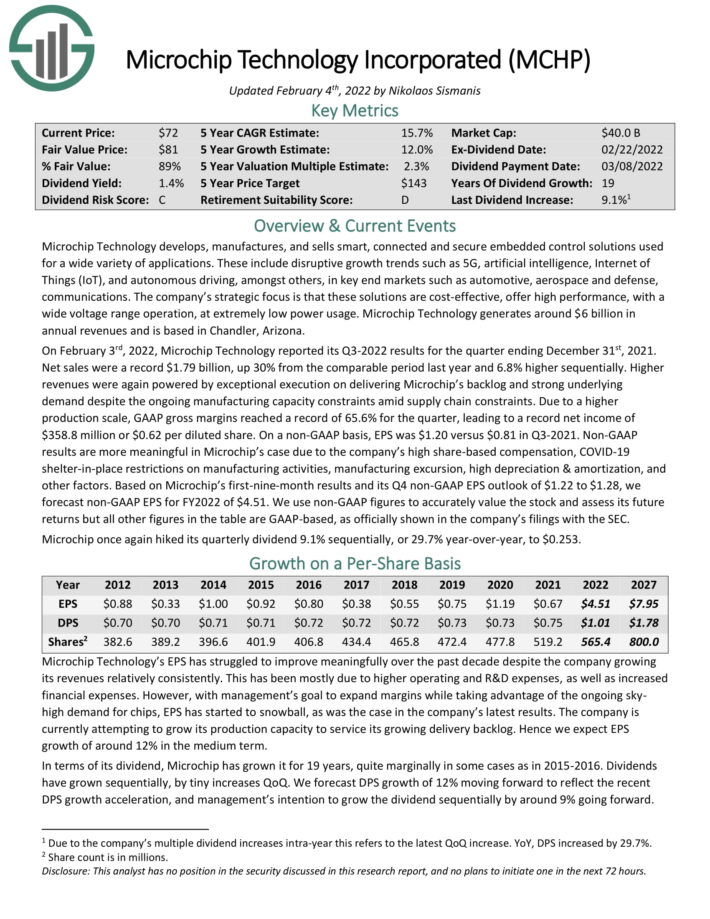The United States is famously the most litigious society in the world. One statistic we’ve come across is that the country spends about $310 billion a year on litigation. One particularly well-known American has been involved in some 3,500 lawsuits, perhaps skewing the statistics a bit. However, our particular interest is in patent lawsuits, which is when companies scuffle over intellectual property. About 14% of all patent litigation cases in the United States involve the biotech and pharmaceutical industry, and we’ve covered our share of them over the years. These include the big battle royale over gene-editing CRISPR technology and lesser-known lawsuits over something like genetic-testing techniques using fragments of DNA in blood.
A Litigious Beginning for 10x Genomics
That brings us to the rapidly emerging field of single-cell genomics, which is exactly what it says on the tin: the study of individual cell genomes. The technique can reveal cellular differences and functions in tissues and organs that are otherwise undetectable using traditional sequencing approaches by looking at the DNA or RNA of each cell. This can help scientists better understand diseases like cancer. Just like the gene-editing tool CRISPR, much of the early research and development of single-cell analysis technology came out of academia. For instance, a life science company called Bio-Rad (BIO) licensed some of the specialized techniques used to isolate cells for genetic analysis from patents owned by the University of Chicago.
In 2012, three guys named Serge Saxonov, Ben Hindson, and Kevin Ness founded 10X Genomics (TXG), based in a San Francisco exurb, to develop similar technology. Specifically, the company started developing specialized instruments and consumable products used to prepare and analyze single-cell samples for next-generation sequencing (NGS) on standard devices sold by companies like Illumina (ILMN). Saxonov was employee numero uno at a little gene-testing company called 23andMe back in the day. Hindson and Ness had previously co-founded a biotech called QuantaLife (where Saxonov worked as a vice president after leaving 23andMe) before they sold the startup to Bio-Rad in 2011.

You might be able to guess what happened next: Bio-Rad started filing lawsuits against 10x Genomics, alleging that the founders had breached confidentiality and non-compete clauses. This was back in 2014 and marked the beginning of a seven-year-long patent war of lawsuits and countersuits. Bio-Rad arguably scored the biggest win back in 2018 when a jury found that 10x had infringed upon some of those University of Chicago patents licensed by Bio-Rad. Eventually, 10x coughed up more than $35 million to satisfy that judgment. It was only in 2021 that the two sides finally agreed to a full cease fire, resolving outstanding litigation worldwide and cross-licensing their single-cell patents. 10x also kicked in another $29 million in royalties and interest related to its flagship product at the heart of the conflict.
What’s Happening with 10x Genomics Stock?

None of that stopped 10x Genomics from growing revenues from less than $4 million in 2015 to $490.5 million in 2021. That’s a compound annual growth rate of 128%. The lawsuits also didn’t stop the company from having a successful IPO in 2019, raising nearly $400 million in the process. By then, the company was considered the dominant player in the single-cell sequencing landscape. We eventually decided to go long on 10x Genomics stock and have stayed the course despite share volatility, confident in the company’s strong gross margins, broad market penetration, and solid razor-and-blade business model.

Then there’s the results from 2022. Revenue growth has slowed dramatically (5% in 2022) and margins are shrinking (77% in 2022 from 85% in 2021). One big drag on growth was Asia, which accounted for about 30% of 2022 revenues at $105.6 million. That number represents a 10% decline over the prior year. Specifically, the company pointed the finger at China, which was still in covid jail last year. Not that growth was gangbusters elsewhere: Revenue growth in the Americas barely cracked double digits at 11%, ending the year with nearly $294 million in revenue. Revenue from European markets was about $117 million, an increase of 8%. Another potential drag on growth: 10x Genomics once again found itself embroiled in multiple new lawsuits (more on that later). The company currently has about $400 million to bankroll litigation and operate a business.

Speaking of which: 10x greatly expanded its portfolio of specialized instruments and consumables last year, including for its flagship Chromium platform for single-cell analysis. For example, the Single Cell Gene Expression Flex array enables researchers to scale up experiments by an order of magnitude by processing up to 10 million cells and hundreds of samples in a single run. Since 2018, when 10x Genomics acquired Spatial Transcriptomics, it has been pushing hard into a complementary area of single-cell sequencing called spatial analysis through its Visium platform. Where single-cell sequencing can tell you what gene each cell is expressing, spatial sequencing describes the spatial relationships between cells in a tissue sample. For example, spatial sequencing of cancerous tissue can reveal how cells are reacting to treatment. The company’s latest platform, Xenium In Situ, enables researchers to perform targeted spatial profiling at subcellular resolution.
Some have compared 10x Genomics to the OG of NGS, Illumina (ILMN), in its early years of dominance before going off the rails. So, why is growth suddenly stalling?
Why Has 10x Genomics Stock Hit a Wall?
First, let’s acknowledge that what 10x Genomics does is pretty complex. We’re MBAs, not whatever these guys are, so we’re going to rely on some bigger brains than our own to understand the technology and its disruptive potential. That includes insights from DeciBio, a strategy consulting and market intelligence firm that specializes in biotech and precision medicine. In a 2020 report, the firm explained why 10x Genomics was the dominant force in single-cell analysis. But technology in this space is moving at warp speed, and the same analysts published a follow-up report just a few months ago after 10x released its 2022 results. The article questioned whether that dominance is still sustainable on two fronts.
- Cost. Apparently, it can cost about $1,000 per sample for single-cell analysis, according to DecBio. At the same time, 10x is trying to sell customers on the idea that single-cell analysis and spatial analysis are complementary. That’s not how DecBio sees it: “Our primary research … indicates that the high costs of these two approaches make them antagonistic – limited budgets force users to ‘choose’ between the two. In other words, single cell budgets are at risk of shifting to spatial analysis.” 10x Genomics is potentially cannibalizing its own business. On the other hand, the cost of NGS, which represents about half of the cost of single-cell analysis, is constantly dropping. And products like Chromium Flex are helping drive down costs as well.
- Utility. This one is related to price. Are the insights gleaned from the 10x platforms worth the cost when cheaper approaches, such as bulk RNA-Seq analysis, can analyze the expression of RNAs from large populations of cells? It really depends on the scientific question at hand. 10x has sold more than 4,600 instruments to date and is furiously cranking out new products. The smart bet is that the technology will only become more relevant as the data resolution improves while costs drop, allowing scientists to drill ever deeper into human biology.
It’s also worth noting that the primary 10x customer base today mainly includes basic research at academic and government institutions. Management believes it still has plenty of inroads to make in its four main markets:

It’s apparent this is a very dynamic, fast-paced market. One big question is how well can 10x Genomics stay ahead of the competition?
Competition and Lawsuits
As you might expect, legacy biological research and medical device companies (or at least their subsidiaries) like Bio-Rad, BD Biosciences, and Takara Bio are among the competition. So far, according to DeciBio, these companies “have attempted to chip away at 10x’s market dominance in the past [five] years but have been largely unsuccessful.” Surprisingly, Bio-Rad has yet to launch its own single-cell analysis platform, though that is supposed to happen by the end of the year.

As you also might expect, the bigger disruption could come from a new wave of startups that are “aiming to challenge 10x’s dominance with instrument-free, modular, and scalable offerings.” Rather than expensive instruments, these new entrants to the single-cell scene keep it simple. For example, Seattle-based Parse Biosciences, which has raised about $50 million, sells kits with software that can profile cell RNA using standard lab equipment. The different approaches between 10x Genomics and companies like Parse Biosciences is somewhat similar to what’s happening in long-read sequencing between Pacific Biosciences (PACB) and Oxford Nanopore (ONT.L). The former’s new flagship long-read sequencer retails for $779,000 while the latter offers an instrument not much larger than a thumb drive for about $1,000. Do customers want big and bad ass or quick and easy?
And as you also might expect, those two companies have had their own legal wranglings over the years, despite the apparent disparity between their approaches. So, it’s no surprise, despite the different business models, that Parse Biosciences is one of three companies that 10x Genomics is currently suing in courts around the world:
- Parse Biosciences: In August 2022, 10x sued Parse claiming that the startup “intends nothing less than to copy 10x’s complete lineup of single-cell products wholesale” related to its Chromium platform.
- Vizgen, a biotech founded in 2019, with more than $136 million in funding: This lawsuit is focused on 10x Bioscience’s newest platform, Xenium, and a similar product from Vizgen. Both companies have licensed patents for the technology from Harvard, which also finds itself in the middle of the countersuit by Vizgen.
- NanoString Technologies (NSTG), a microcap life sciences company: 10x Genomics has been on the offensive against NanoString over Xenium-related patents since 2021. 10x appears to have the upper hand after a court in Germany issued an injunction for NanoString to cease selling its spatial analysis instrument and consumables. Lawsuits are still underway in the United States.
Retail investors don’t need to have a degree in jurisprudence, but litigation can be a red flag against a company or an entire industry, if competitors are spending all their money in court rather than on product development. 10x certainly has a right to defend itself, but we also wonder if there are some larger issues at play with these university-licensed patents.
What’s Next for 10x Genomics Stock?
Certainly, 10x Genomics has plenty of other concerns, such as returning to a high-growth tempo. In the short term, investors can expect steady but not spectacular growth from the company. As of Q1-2023, management said it expects full-year revenue to be in the range of $590 million to $610 million, representing growth of 14% to 18%. That’s a little better than the company previously predicted and is reflected in Q1-2023 results of $134.3 million, a 17% increase from the corresponding prior year period. China is continuing to be a drag on revenues, which were down about 36% in Q1-2023, after management expected a drop of only 20%. Hopefully, that improves as China emerges from lockdown.

The company recently decided to drop one of its key performance indicators – what it calls “consumable pull-through.” Basically, the number represents consumables revenue per machine. That metric is becoming more and more meaningless as 10x introduces new instruments and products, particularly in the spatial analysis market. Fortunately, the 10x is now providing insights into its two main technology markets (Chromium and Visium/Xenium):

We certainly appreciate the new granularity into revenues. A couple of things immediately jump out at us here: Revenue from the newly launched spatial analysis instruments is off to a great start, with spatial consumables revenue up 69% for the comparable three-month period. However, sales of Chromium instruments dropped, perhaps suggesting some degree of saturation, cannibalization from spatial sales, or inroads by competitors. That’s something we’ll want to revisit in next year’s check-in.

We’ll also want to keep an eye on gross margin; it fell to 73% in the first quarter of this year. Management conceded that it will continue to trend lower as more Xenium instruments head out from the showroom floor, because that machine currently carries a “significantly lower margin than our other instruments.” The company wanted to build a Mercedes not a Mitsubishi, with “high-end components, prioritizing performance and time to market over cost.” 10x says it will eventually reduce costs on some components, especially as it scales manufacturing. Hopefully, deep-pocketed customers are convinced that the scientific results justify the price tag.
Conclusion
10x Genomics currently operates in one of the most complex and competitive markets within the broader genetics industry. The big question is whether the company can maintain its market-leading position in a sector that is so relatively new that it’s hard to predict which technology will eventually dominate. That’s especially relevant with 10x at a transition point, as it builds out the new spatial analysis platforms and deploys new products for its flagship Chromium platform. Transitions are when companies are vulnerable to disruption both externally and internally. If 10x Genomics can successfully defend its technological moat against a rising sea of startups and execute to plan, it could be the Illumina of single-cell (and spatial) analysis.
Tech investing is extremely risky. Minimize your risk with our stock research, investment tools, and portfolios, and find out which tech stocks you should avoid. Become a Nanalyze Premium member and find out today!

















